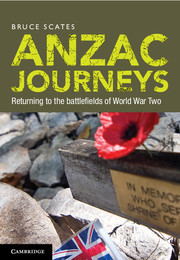Book contents
6 - Death in the desert: North Africa
from PART 2 - DESERT AND ISLAND
Published online by Cambridge University Press: 05 June 2013
Summary
The battlefield of North Africa stretched across more than a thousand kilometres of desert from Alamein (near Alexandria) to Benghazi in Cyrenaica. Libya had been an Italian colony since the 1930s, its occupation part of Benito Mussolini's quest to build a new Roman empire. His ally was Germany, in particular general Erwin Rommel and his mechanised Desert Corps. Defending Egypt was important to the Allies in order to maintain control of the Suez Canal. In August 1940, No. 3 Squadron RAAF arrived in North Africa and began operations against Axis forces in the Western Desert in November. The first land combat involving Australian infantry took place during the battle of Bardia in January 1941. Fourteen thousand Australians were besieged at Tobruk between April and August 1941, during which time 559 died. The Western Desert campaign turned decisively in the Allies' favour in November 1942 when the combined German and Italian forces were defeated in the battle of EI Alamein.
Kathleen Gahan's passport is sealed in plastic sheeting in the State Library of Victoria's heritage collection. It slips from its folder onto the table, leaving a trail of dust and memories. The old blue cover is soiled and battered, bent, perhaps, by customs officials impatient to stamp it.
- Type
- Chapter
- Information
- Anzac JourneysReturning to the Battlefields of World War Two, pp. 126 - 147Publisher: Cambridge University PressPrint publication year: 2013



